Audi Q3 vs BMW X5 - Differences and prices compared
Compare performance (272 HP vs 625 HP), boot space and price (38200 £ vs 77100 £) at a glance. Find out which car is the better choice for you – Audi Q3 or BMW X5?
Costs and Efficiency:
Price and efficiency are key factors when choosing a car – and this is often where the real differences emerge.
Audi Q3 has a convincingly advantage in terms of price – it starts at 38200 £, while the BMW X5 costs 77100 £. That’s a price difference of around 38829 £.
Fuel consumption also shows a difference: Audi Q3 manages with 1.70 L and is therefore clearly more efficient than the BMW X5 with 3 L. The difference is about 1.30 L per 100 km.
As for range, the Audi Q3 performs a bit better – achieving up to 119 km, about 14 km more than the BMW X5.
Engine and Performance:
Power, torque and acceleration are the classic benchmarks for car enthusiasts – and here, some clear differences start to show.
When it comes to engine power, the BMW X5 has a decisively edge – offering 625 HP compared to 272 HP. That’s roughly 353 HP more horsepower.
In acceleration from 0 to 100 km/h, the BMW X5 is clearly quicker – completing the sprint in 3.90 s, while the Audi Q3 takes 5.70 s. That’s about 1.80 s faster.
In terms of top speed, the BMW X5 performs barely noticeable better – reaching 250 km/h, while the Audi Q3 tops out at 240 km/h. The difference is around 10 km/h.
There’s also a difference in torque: BMW X5 pulls significantly stronger with 750 Nm compared to 400 Nm. That’s about 350 Nm difference.
Space and Everyday Use:
Whether family car or daily driver – which one offers more room, flexibility and comfort?
Both vehicles offer seating for 5 people.
In curb weight, Audi Q3 is noticeable lighter – 1635 kg compared to 2240 kg. The difference is around 605 kg.
In terms of boot space, the BMW X5 offers clearly perceptible more room – 650 L compared to 488 L. That’s a difference of about 162 L.
In maximum load capacity, the BMW X5 performs distinct better – up to 1870 L, which is about 484 L more than the Audi Q3.
When it comes to payload, BMW X5 clearly perceptible takes the win – 705 kg compared to 535 kg. That’s a difference of about 170 kg.
Who comes out on top?
Overall, the BMW X5 shows itself to be is largely superior and secures the title of DriveDuel Champion.
It convinces with the more balanced overall package and proves to be the more versatile choice for everyday use.

BMW X5
Costs and Consumption
View detailed analysis
Engine and Performance
View detailed analysis
Dimensions and Body
View detailed analysis
Audi Q3
The Audi Q3 feels like a grown-up compact SUV with premium polish and city-friendly agility, the sort of car that makes weekend escapes and daily commutes equally satisfying. Inside, you get quality materials and smart packaging that keep things practical without skimping on style, so it’s an easy pick for buyers who want luxury without the drama.
details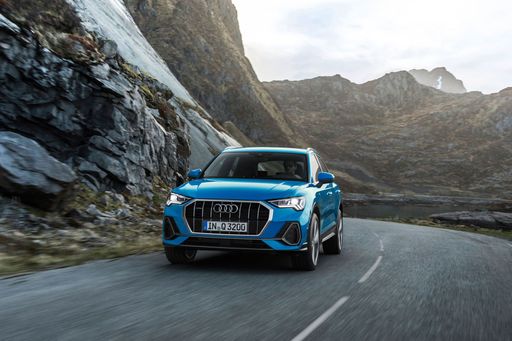

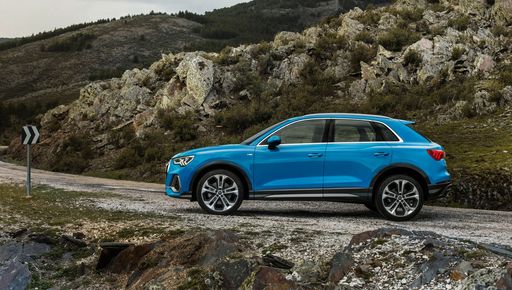
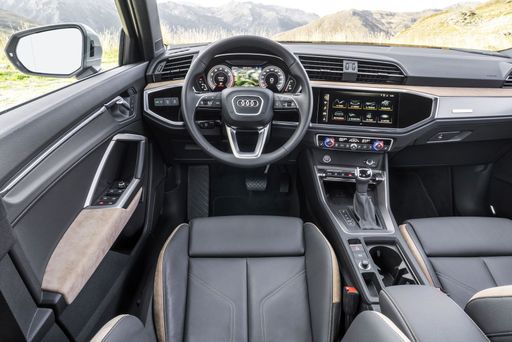
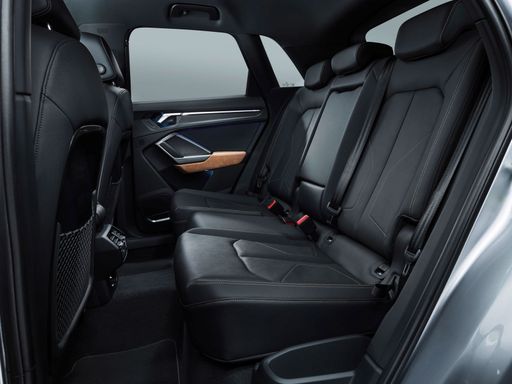
BMW X5
The BMW X5 blends athletic handling with a roomy, premium interior, feeling equally at home on twisty country roads and the school-run car park. Its executive-lounge cabin and confident road presence make it a tempting choice for buyers who want comfort, capability and just a little bit of bragging rights.
details
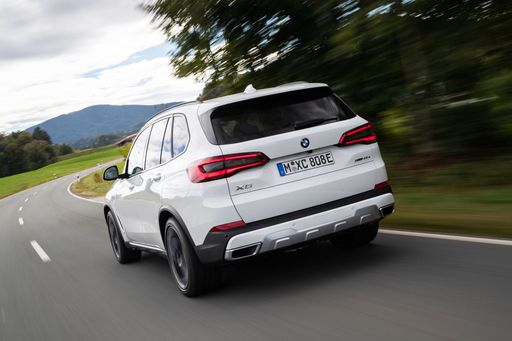
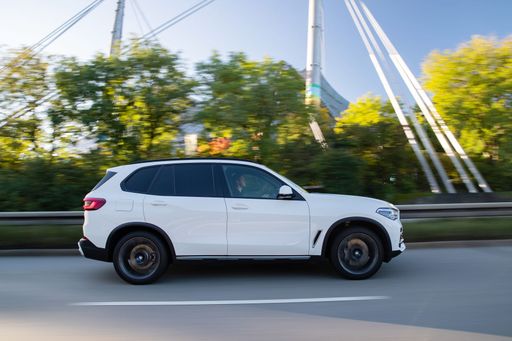
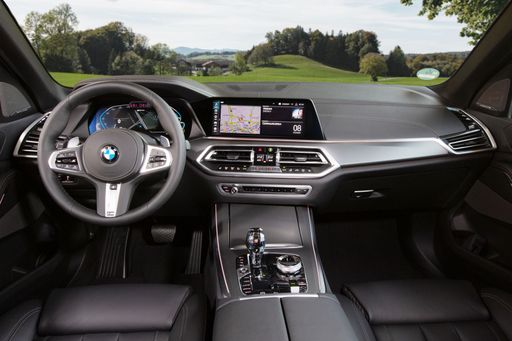
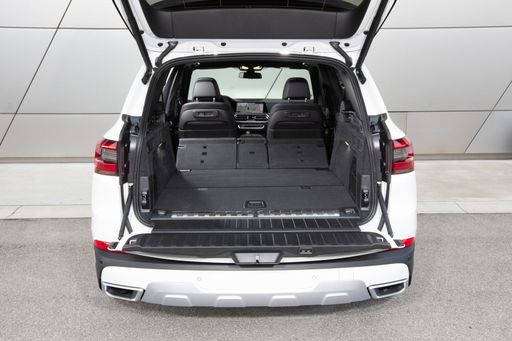

|

|
|
|
|
Costs and Consumption |
|
|---|---|
|
Price
38200 - 52900 £
|
Price
77100 - 143500 £
|
|
Consumption L/100km
1.7 - 8.6 L
|
Consumption L/100km
3 - 12.8 L
|
|
Consumption kWh/100km
-
|
Consumption kWh/100km
-
|
|
Electric Range
118 - 119 km
|
Electric Range
105 km
|
|
Battery Capacity
19.70 kWh
|
Battery Capacity
25.70 kWh
|
|
co2
39 - 195 g/km
|
co2
68 - 289 g/km
|
|
Fuel tank capacity
45 - 60 L
|
Fuel tank capacity
69 - 83 L
|
Dimensions and Body |
|
|---|---|
|
Body Type
SUV
|
Body Type
SUV
|
|
Seats
5
|
Seats
5
|
|
Doors
5
|
Doors
5
|
|
Curb weight
1635 - 1900 kg
|
Curb weight
2240 - 2495 kg
|
|
Trunk capacity
375 - 488 L
|
Trunk capacity
500 - 650 L
|
|
Length
4531 mm
|
Length
4935 - 4948 mm
|
|
Width
1859 mm
|
Width
2004 - 2015 mm
|
|
Height
1559 - 1601 mm
|
Height
1755 - 1765 mm
|
|
Max trunk capacity
1196 - 1386 L
|
Max trunk capacity
1720 - 1870 L
|
|
Payload
505 - 535 kg
|
Payload
565 - 705 kg
|
Engine and Performance |
|
|---|---|
|
Engine Type
Petrol MHEV, Petrol, Plugin Hybrid, Diesel
|
Engine Type
Petrol MHEV, Diesel MHEV, Plugin Hybrid
|
|
Transmission
Automatic
|
Transmission
Automatic
|
|
Transmission Detail
Dual-Clutch Automatic
|
Transmission Detail
Automatic Gearbox
|
|
Drive Type
Front-Wheel Drive, All-Wheel Drive
|
Drive Type
All-Wheel Drive
|
|
Power HP
150 - 272 HP
|
Power HP
298 - 625 HP
|
|
Acceleration 0-100km/h
5.7 - 9.2 s
|
Acceleration 0-100km/h
3.9 - 6.1 s
|
|
Max Speed
208 - 240 km/h
|
Max Speed
233 - 250 km/h
|
|
Torque
250 - 400 Nm
|
Torque
540 - 750 Nm
|
|
Number of Cylinders
4
|
Number of Cylinders
6 - 8
|
|
Power kW
110 - 200 kW
|
Power kW
219 - 460 kW
|
|
Engine capacity
1498 - 1984 cm3
|
Engine capacity
2993 - 4395 cm3
|
General |
|
|---|---|
|
Model Year
2025
|
Model Year
2025
|
|
CO2 Efficiency Class
E, G, B
|
CO2 Efficiency Class
G, B
|
|
Brand
Audi
|
Brand
BMW
|
Is the Audi Q3 offered with different drivetrains?
The Audi Q3 is available as Front-Wheel Drive or All-Wheel Drive.
The prices and data displayed are estimates based on German list prices and may vary by country. This information is not legally binding.
